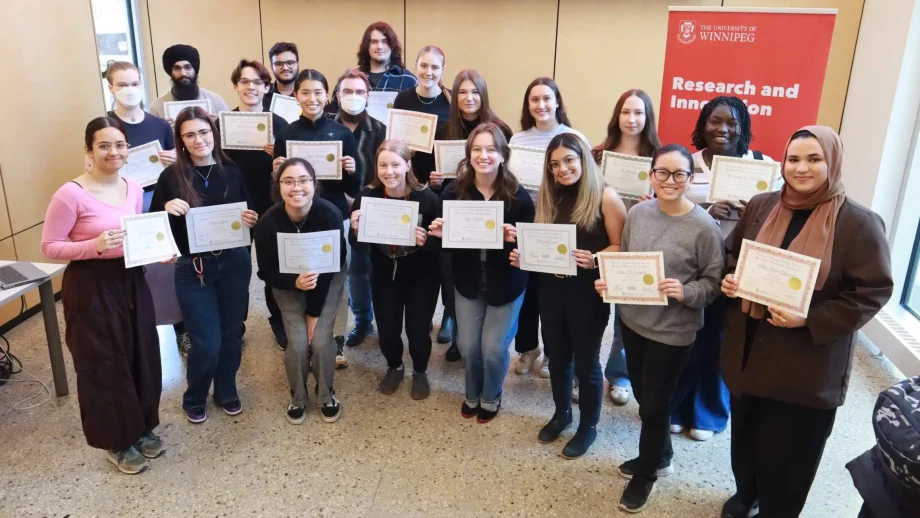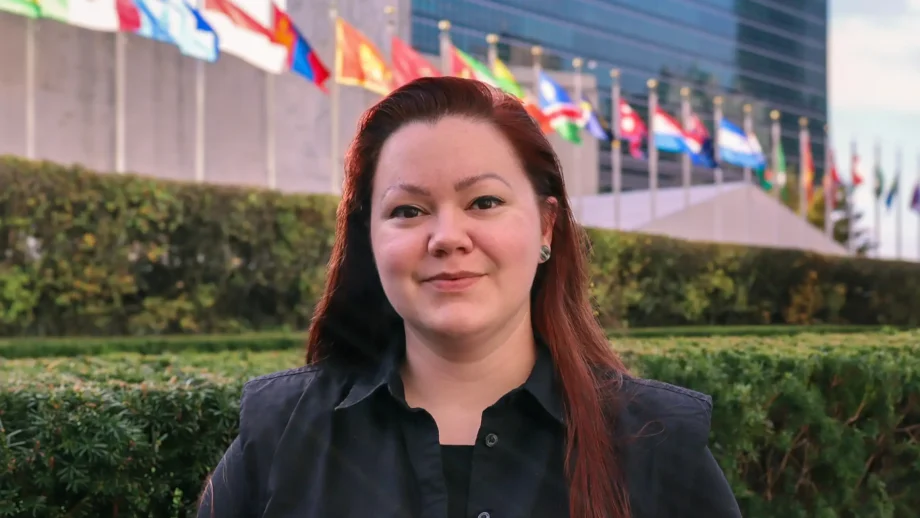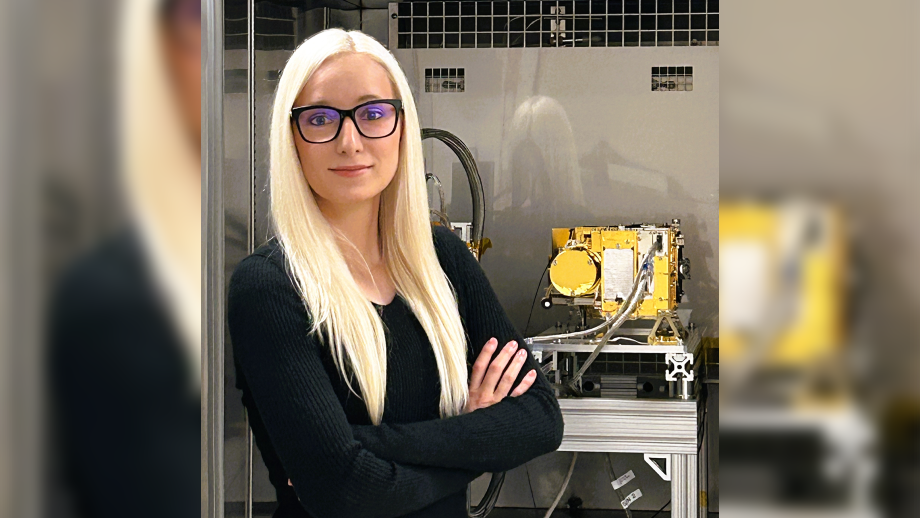The University of Winnipeg is sending nine students to the Women in Physics Canada Conference (WIPC), which is being hosted by the University of Manitoba from July 4 to 7 with astrophysicist Dame Susan Jocelyn Bell Burnell as the keynote speaker. Student registration fees were funding by the Research Office, and the Department of Physics is a sponsor of the conference.
Undergraduate and graduate students Madison Chisholm, Emma Friesen, Amala Jaison, Jessica de Kort, Portia Switzer, Maedeh Lavvaf, and Kyle Wittmeier will be at the conference, as well as alumna Melissa Anderson, who is currently completing her PhD at UManitoba, and her colleague Tahereh Mohammadi.
This team will present on a range of topics, including medical, subatomic, and theoretical physics, to researchers, educators, data scientists, programmers, and industry professionals from across the country.
“Holding the Women in Physics Canada Conference is one of many things the Canadian Association of Physicists is doing to promote diversity,” shared UWinnipeg physicist Dr. Melanie Martin. “Our students will have the opportunity to present their work to a national audience and learn about physics research from across Canada from leading women in the field.”
Presenting important student-led research
Friesen, who is a biochemistry honours student and also plays for the Wesmen women’s soccer team, will be presenting her research, Measuring Axon Diameters Within the Corpus Callosum Using Diffusion Weighted Imaging and OGSE Pulse Sequences, which she is undertaking with Dr. Martin.
“Working with Melanie has been a great experience where I have met students and graduates at various levels in their education to learn about more opportunities available to me in academia and industry,” said Friesen. “I have grown to love research, although at first it was intimidating.”
Their research looks at axons, which are parts of nerve cells in the brain, to determine differences in density that will help with diseases such as schizophrenia, autism spectrum disorders. They are mapping protons within the brain to visualize the microstructure, such as neurons and the myelin sheath surrounding them, using diffusion imaging and a specific type of pulse sequence in order to determine the diameter of these small structures.
Currently, measuring the diameter of an axon requires dead brain tissue samples viewed under a scanning electron microscope.
“We are working toward diagnostic methods in living people to find out if there is a difference in density,” said Dr. Martin. “If we can find where and when the difference happens, we can hopefully find a better diagnostic method to monitor treatments and a better means to identify causes to one day find a cure. If we can do this in the living brain using MRI, we could potentially detect changes in axon diameters prior to clinical symptoms of neurodegenerative disorders, such as schizophrenia.”
Mohammadi is pursuing her PhD under the supervision of UWinnipeg’s Dr. Jeff Martin. She is a member of the TRIUMF Ultra-Cold Advanced Neutron collaboration, Canada’s particle accelerator centre in Vancouver, BC. The goal of the collaboration is to measure the electric dipole moment of the neutron to a precision that is a factor of ten better than the current world’s best.
“Tahereh is rapidly becoming the world’s expert in how to build and operate a new magnetic field measuring device,” said Dr. Jeff Martin. “The research Tahereh is conducting uses precision measurements of magnetic resonance of neutrons to search for hints of the effects of antimatter. The techniques require the development of magnetic sensors that are so sensitive that they could even be used to detect brain waves.”
Mohammadi is attending the Women in Physics Canada Conference to interact and share experiences with fellow women in her field.
“This conference offers valuable insights and resources to guide and advance women in physics,” she shared.





